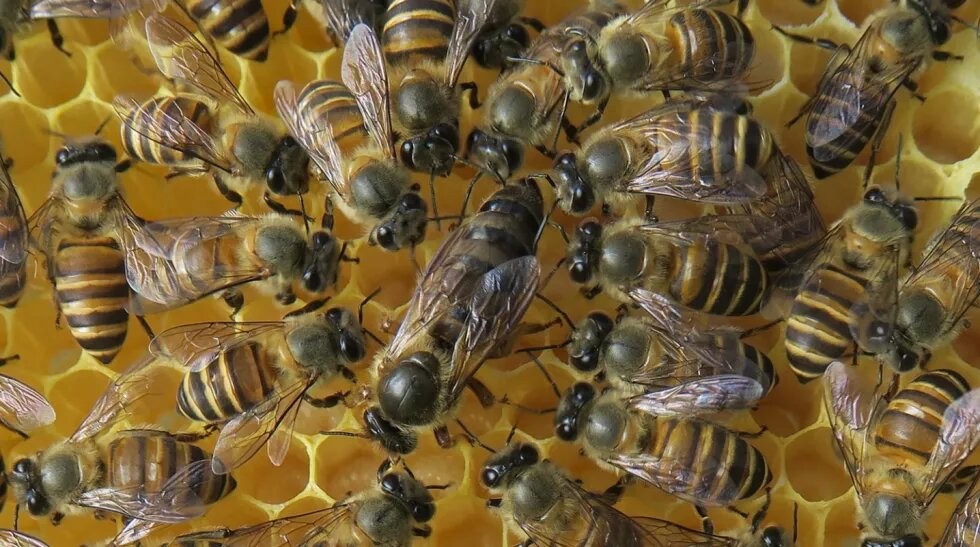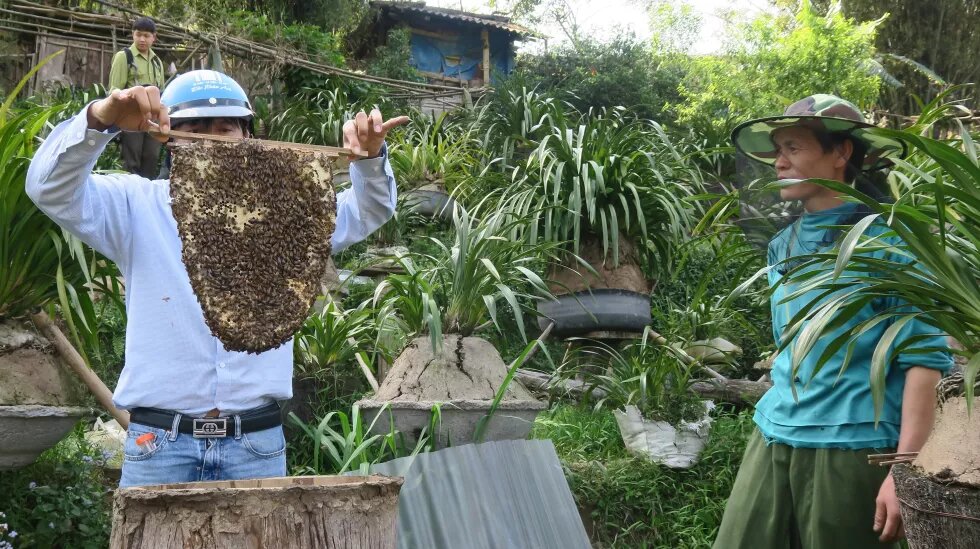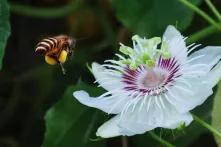
The Asian native honey bee, Apis cerana, is under increasing strain from human activities on its ecosystems. Beyond the degradation of their environment, Apis cerana populations might also be exposed to additional threats as part of the intensification of beekeeping practices. Indeed, though the beekeeping sector is mostly benevolent towards bees, beekeepers may unknowingly contribute to weakening the colonies they manage and to the decline of local native bee populations. This article would like to pose a question, "Should we go ahead with the intensification of beekeeping practices with the Asian honey bee, Apis cerana?"

Like other Southeast Asian native honey bees, Apis cerana is under increasing strain from human activities on their ecosystems. Apis cerana populations are threatened by (i) the loss of their habitats as a result of deforestation, forest fires and agriculture intensification, (ii) an increasing use of pesticides and in particular of the infamous systemic insecticides also called “bee-killing insecticides” and (iii) climate change resulting in mismatches between flowers blooms and bee migrations, increasing forest fires, extended draught or raining episodes.
But beyond these challenges due to the degradation of their environment, Apis cerana populations may also be exposed to additional threats as part of the intensification of beekeeping practices (1).
Broadly speaking, in South and Southeast Asia, beekeeping with Apis cerana is still at an early stage of modernization/intensification when compared to beekeeping with the Western honey bee, Apis mellifera.
Often considered as a handicap by the beekeeping industry, in particular because of the lower honey yields, this poor level of intensification could actually constitute an opportunity in the perspective of the development of sustainable beekeeping and the conservation of the wild populations of Apis cerana.
The development of more productive beekeeping with Apis cerana, possibly with the best intentions, such as improving the livelihood of less privileged communities, might be tempting. However, as for any agricultural field, the intensification of beekeeping practices might have negative consequences on the environment, including the bees themselves.
Apis cerana has a wide distribution range, covering the Indian subcontinent, Southeast Asia, southern and western China, Korea and Japan. This vast area encompasses a series of bioclimatic zones to which Apis cerana had to acclimate. To do so, each local population of Apis cerana has developed specific characteristics adapted to its environment (1). These local adaptations resulted in the differentiation of numerous subspecies (2) (3). Though they have evolved separately, these different populations are still able to crossbreed.”
As they are best adapted to their respective environment, subspecies have a higher survival rate in their native area when compared to non-native subspecies. Also, they constitute local reservoirs of genetic diversity which might become critical for future conservation. For these two reasons, the preservation of local subspecies should be considered as a priority as part of the conservation of Apis cerana.
Some of the characteristics developed by local ecotypes to best adapt to their specific environment may differ from apicultural traits desired by beekeepers. For example, like any living creatures, the main purpose of bee colonies is reproduction in order to perpetuate the species. Thus producing a large number of swarms, where the old queen flies away from the hive with thousands of worker bees to form a new colony, may be an advantage for wild bee colonies. Also, producing a large quantity of honey may not be a priority to bees adapted to tropical climates where they can forage more or less yearlong.
Wild colonies may also have a high absconding trend, where a honey bee colony completely abandons a hive as a result of problems or unfavorable conditions. This is in order to move the location of their nest following successive flower blooms, as well as part of their strategy to control infestations by parasites and diseases. Furthermore, bee populations exposed to predators may have developed strong defensive behaviors. On the contrary, beekeepers commonly prefer colonies that produce large amounts of honey (productive bees), are not aggressive (gentle bees that don’t sting them), and have low absconding and swarming trends.
By selecting colonies that best meet their requirements, beekeepers progressively modify the genetic diversity of their bees. These modifications may in turn spread to the surrounding native bee population, as colonies kept in hives constantly exchange genetic materials with wild colonies nesting in their vicinity (1) (5).
The consequences of these modifications remain very likely minor when they involve a small number of managed colonies surrounded by a large wild population of native bees. However, when practiced at large scale and in a context of native bee populations already weakened by a degradation of their environment, bee selection by beekeepers may contribute to reshaping the genetic diversity of local native bee populations.
A greater source of genetic modification of bee populations is hybridization. As subspecies are still able to interbreed, two bee subspecies coming in contact result in the development of an admixed population, also called hybrid (1). But how can two isolated bee populations come into contact?
Beekeepers may contribute to the hybridization of two bee populations by introducing queens or colonies originating from other populations in their apiaries. The international trade of bees and queen bees constitutes a big threat to bee genetic diversity from this perspective (6). Though not yet generalized when compared to Apis mellifera, international trade of Apis cerana queens and colonies has already started: Chinese colonies are exported to Vietnam, Indian queens exported to Laos. Moving colonies over long distances as part of migratory beekeeping may also bring two subpopulations in contact. As native subspecies are the best adapted to their specific environment (7), their admixing with non-native subspecies can undermine their conservation (8).
Pushed to their extremes, hybridization and selection, might result in the creation of artificial bee populations, as has occurred with Apis mellifera in Europe. The Buckfast bee, a bee artificially created from the interbreeding of multiple Apis mellifera subspecies (9) (10), has become very popular among European beekeepers for its particularly high productivity and gentleness. As a result of this popularity, the Buckfast breed is widely spread in many European countries where it constantly introduces alien genetic material into native bee populations.
Beyond their impact on genetic diversity, migratory beekeeping, as well as the international trade in queens and colonies, may also enhance the spread of diseases and parasites. By introducing queens or bee colonies originating from different populations, or by moving their colonies, beekeepers may involuntarily introduce new diseases and parasites to bee populations. The introduction of new pathogens into a native bee population defenseless against them may have dramatic consequences.
The worldwide spread of Varroa destructor, a parasitic mite originating from Southeast Asia and considered as one of the main factors of the demise of most wild populations of Apis mellifera in Europe (11), is a sad illustration of the dramatic consequences of beekeeping intensification and globalization. Furthermore, since the introduction of Varroa destructor, managed bee populations of the Western honey bee in Europe, USA and Asia only survive thanks to periodical acaricide treatments by beekeepers (1). Thus, the introduction of a new pathogen has led not only to the demise of most wild populations of the honey bee species (Apis mellifera) on a continental scale (Europe), but also to the reliance of managed populations on chemical treatments provided by beekeepers on three continents (Europe, USA and Asia). Interestingly, Africa, where the beekeeping industry remains relatively undeveloped, is the last continent owning large and diverse wild populations of Apis mellifera (1).
In some cases, beekeepers’ preferences may lead to the demise of a local subspecies not only from the wild but also from apiaries. This occurred in Germany where the native population of Apis mellifera mellifera has been almost replaced by Apis mellifera carnica, a subspecies native to southeastern Europe, because the local beekeepers decided to promote this imported subspecies (12).
The conservation of Apis mellifera subspecies, or what is left of them, has become of major concern in Europe and beyond, and several countries have established protected areas to preserve what remains of their native subspecies (1) (5) (6) (13) (14).
So which path will we in Asia follow with Apis cerana? Shall the dramatic consequences of decades of intensification and globalization of the beekeeping industry on Apis mellifera inspire us and call for a degree of caution in further development of beekeeping with Apis cerana?
The good news is that alternatives exist. Several passionate beekeepers and researchers in the region have developed, through years of meticulous field observations, alternative forms of beekeeping with Apis cerana; more sustainable, better adapted to their environment and more respectful to local bee populations. It might be wise drawing inspiration from these visionary small-scale beekeeping experts to propose a different approach of beekeeping with Apis cerana to systematic intensification.
__
Eric Guerin is French biologist, expert on beekeeping and Asian native bees conservation. Based in Southeast Asia since 2008, he has made a special effort to document the work of honey hunters and rafter beekeeping communities, diffusing sustainable honey collection practices, introducing small-scale beekeeping as part of organic agriculture development, raising awareness on native honey bee conservation, and supporting optimization of forest honey value chains. He is based in Siem Reap, Cambodia.
The views expressed in this article are not necessarily those of Heinrich Böll Stiftung.
References
1. G Leclercq, N Gengler, and F Francis, "How human reshaped diversity in honey bees (Apis mellifera L.): a review," Entomologie Faunistique – Faunistic Entomology 71 (2018).
2. F Ruttner, Biogeography and taxonomy of honeybees (Berlin: Springer-Verlag, 1988).
3. S.E. Radloff et al., "Population structure and classification of Apis cerana," Apidologie 41 (2010): 589–601.
4. H.R. Hepburn et al., "Infraspecific categories of Apis cerana: morphometric, allozymal and mtDNA diversity," Apidologie 32 (2001): 3–23.
5. P De la Rúa et. al., "Biodiversity, conservation and current threats to European honey bees," Apidologie 40 (2009): 263–284.
6. M Kükrer, M Kence, and A Kence, "Honey bee diversity is swayed by migratory beekeeping and trade despite conservation practices: genetic evidence for the impact of anthropogenic factors on population structure," Front. Ecol. Evol. 9 (2021), https://doi.org/10.3389/fevo.2021.556816
7. R Büchler et al., "The influence of genetic origin and its interaction with environmental effects on the survival of Apis mellifera L. colonies in Europe,". Journal of Apicultural Research. 53 (2014): 205–214, https://doi.org/10.3896/IBRA.1.53.2.03
8. P De la Rúa et al., "Conserving genetic diversity in the honeybee: comments on Harpur et al. (2012)," Mol. Ecol. 22 (2013): 3208–3210, https://doi.org/10.1111/mec.12333
9. B Adam, Beekeeping at Buckfast Abbey (Northern Bee Books, 1987).
10. E Österlund, "Brother Adam and His Buckfast Bee," American Bee Journal 123(2) (1983): 85–88.
11. S.J. Martin et al., "Global honey bee viral landscape altered by a parasitic mite," Science 336(6086), (2012): 1304–1306.
12. M Lodesani and C Costa. "Bee breeding and genetics in Europe," Bee World 84(2), (2003): 69–85.
13. F Requier et al., "The conservation of native honey bees is crucial," Trends Ecol. Evol. 34(9), (2019): 789–798, 10.1016/j.tree.2019.04.008.
14. M Bouga et al. "A review of methods for discrimination of honey bee populations as applied to European beekeeping," Journal of Apicultural Research 50(1), (2011): 51–84.





